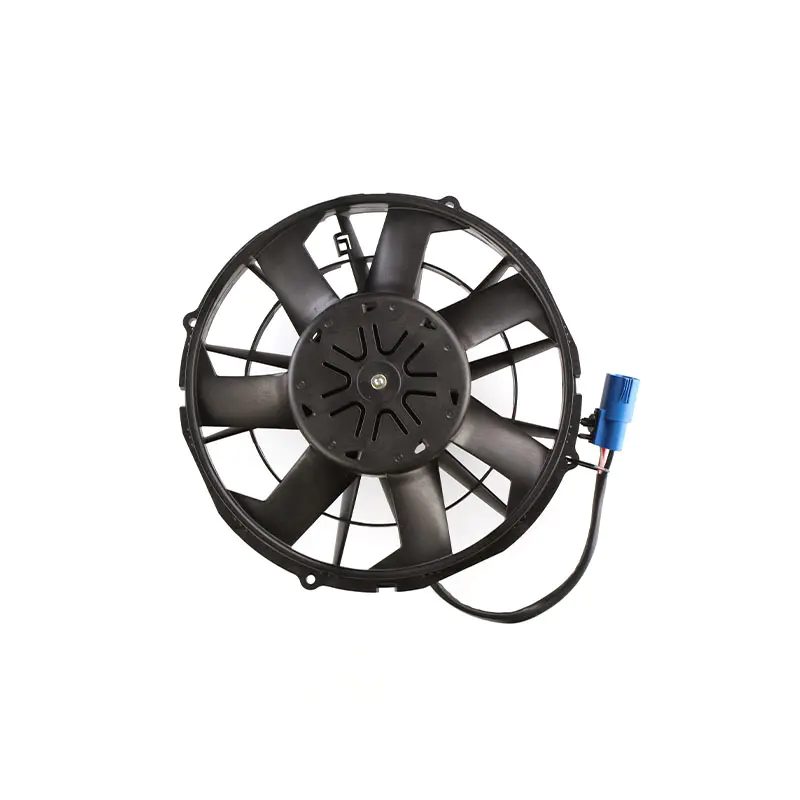ติดต่อเรา
ที่อยู่อีเมลของคุณจะไม่ถูกเผยแพร่ ช่องที่ต้องกรอกถูกทำเครื่องหมายไว้ -
ประสิทธิภาพสูงและมีเสียงรบกวนต่ำ DC Axial Flow พัดลมเปลี่ยนการระบายความร้อนในอุตสาหกรรม
Sep 25, 2025เพิ่มประสิทธิภาพการระบายความร้อน: บทบาทของพัดลมหม้อน้ำถังประสิทธิภาพสูง
Sep 18, 2025ประสิทธิภาพการไหลเวียนของอากาศสูงนิยามใหม่ของรถถัง
Sep 11, 2025IP68 DC Motors: นิยามใหม่ประสิทธิภาพในสภาพแวดล้อมที่รุนแรง
Sep 04, 2025เหตุใดพัดลม Axial ที่ไร้แปรงจึงเป็นทางเลือกสำหรับการระบายอากาศที่มีประสิทธิภาพและการระบายความร้อน?
Jul 31, 2025EC forward-tilting แฟน ๆ sentrifugal: ประสิทธิภาพและประสิทธิภาพที่อธิบายประสิทธิภาพและประสิทธิภาพที่อธิบาย
Aug 29, 2025พัดลมแรงเหวี่ยง dc ไร้เดียงสา: คู่มือที่ครอบคลุมสำหรับการเลือกและแอปพลิเคชัน
Aug 20, 2025พัดลมไหลตามแนวแกน DC: คู่มือที่ครอบคลุม
Aug 11, 2025พัดลมเครื่องหมุนหลักของยานยนต์ DC: คู่มือที่ครอบคลุม
Aug 04, 2025มอเตอร์พัดลมระบายความร้อน DC: ตัวขับหลักของการกระจายความร้อนที่มีประสิทธิภาพ
Jul 24, 2025ความลึกลับทางแม่เหล็กไฟฟ้าของเครื่องเป่าลมและแนวทางปฏิบัติหลายอย่าง
Jul 17, 2025มอเตอร์พัดลมระเหยได้อย่างไรให้การระบายความร้อนที่มีประสิทธิภาพและเชื่อถือได้?
Jul 08, 2025
1. Choose the right fan type and structure
The working principle of Centrifugal fans is based on Newton's third law, that is, action and reaction. Through the rotating impeller, the fan converts mechanical energy into kinetic energy of airflow, thereby realizing gas transportation. When choosing the right fan type and structure, the following key factors need to be considered:
1. Air volume and air pressure requirements
Air volume refers to the volume of gas passing through the fan per unit time, while air pressure represents the ability of the fan to overcome resistance and transport gas. Different application scenarios have different requirements for air volume and air pressure. In large industrial plants, high air volume may be required to quickly replace indoor air; while in the smoke exhaust system of high-rise buildings, high air pressure is required to ensure that the smoke can be discharged smoothly. When selecting, the air volume and air pressure requirements of the application scenario should be clarified first.
2. Installation space and structural requirements
The size and shape of the installation space have an important impact on the selection of fans. In a limited space, it may be necessary to choose a compact fan design or adopt a special installation method (such as wall-mounted, ceiling-mounted, etc.). The structural requirements of the fan should also be taken into account, such as whether special properties such as explosion-proof, corrosion-resistant, and high-temperature resistant are required.
3. Noise and energy efficiency
Noise and energy efficiency are important indicators for measuring fan performance. In application scenarios that require low noise, fans with low noise designs should be selected, such as using noise reduction measures such as silencers and sound insulation materials. Energy efficiency is also a factor that cannot be ignored. Efficient fans can provide stable air volume and air pressure output while reducing energy consumption.
2. Optimize the design of Custom Centrifugal Fans according to specific application scenarios
After selecting the appropriate fan type and structure, how to further optimize the design of Custom Centrifugal Fans to meet the needs of specific application scenarios has become a more detailed and complex task.
1. Optimization of impeller design
The impeller is the core component of the fan, and its design directly affects the performance and efficiency of the fan. By optimizing the shape, number of blades and angle of the impeller, the air volume and air pressure output of the fan can be significantly improved, while reducing noise and energy consumption. The use of streamlined blade design can reduce the resistance of the airflow on the blades and improve the efficiency of the fan; while increasing the number of blades can increase the air volume of the fan to a certain extent.
2. Optimization of casing design
The casing is another important component of the fan, and its design has an important impact on the airflow distribution and noise level of the fan. By optimizing the shape and size of the casing, the flow state of the airflow inside the fan can be improved, and the eddy and turbulent phenomena can be reduced, thereby improving the efficiency and stability of the fan. The use of sound insulation materials and sound-absorbing structures can reduce the noise level of the fan.
3. Selection of motor and transmission system
The motor and transmission system are the power source of the fan, and their performance directly affects the operating efficiency and reliability of the fan. When selecting a motor, its power, speed, efficiency and other parameters should be considered to ensure that the fan can operate stably and provide the required air volume and air pressure. The selection of the transmission system should also fully consider factors such as its transmission efficiency, stability and maintenance cost.
4. Application of intelligent control systems
With the development of intelligent technology, more and more fans are beginning to use intelligent control systems for precise control. Through sensors that monitor the operating status and environmental parameters of the fan in real time, the intelligent control system can automatically adjust the fan speed and air volume output to achieve the goals of energy saving and stable operation. The intelligent control system can also provide functions such as fault warning and remote monitoring to reduce operation and maintenance costs and improve operation and maintenance efficiency.

ที่อยู่อีเมลของคุณจะไม่ถูกเผยแพร่ ช่องที่ต้องกรอกถูกทำเครื่องหมายไว้ -
Zhejiang Nicety Electric Machinery Co., Ltd. เชี่ยวชาญการผลิตผลิตภัณฑ์ 4 ชุด ได้แก่ พัดลมอิเล็กทรอนิกส์คอนเดนเซอร์ พัดลมหม้อน้ำ (ถังเก็บน้ำ) โบลเวอร์ และชุดประกอบเครื่องปรับอากาศ การผลิตระดับมืออาชีพพัดลมแกน DC สำหรับยานยนต์แบรนด์อเมริกา ยุโรป ญี่ปุ่น เกาหลี และในประเทศ
Email: [email protected] / ลิลลี่@zjnem.com
Tel: +86-0578-7125439 / +86 181 0658 9231
Address:เลขที่ 98 ถนน Guangda เขตอุตสาหกรรม Jinsha เมืองหลงฉวน มณฑลเจ้อเจียง ประเทศจีน